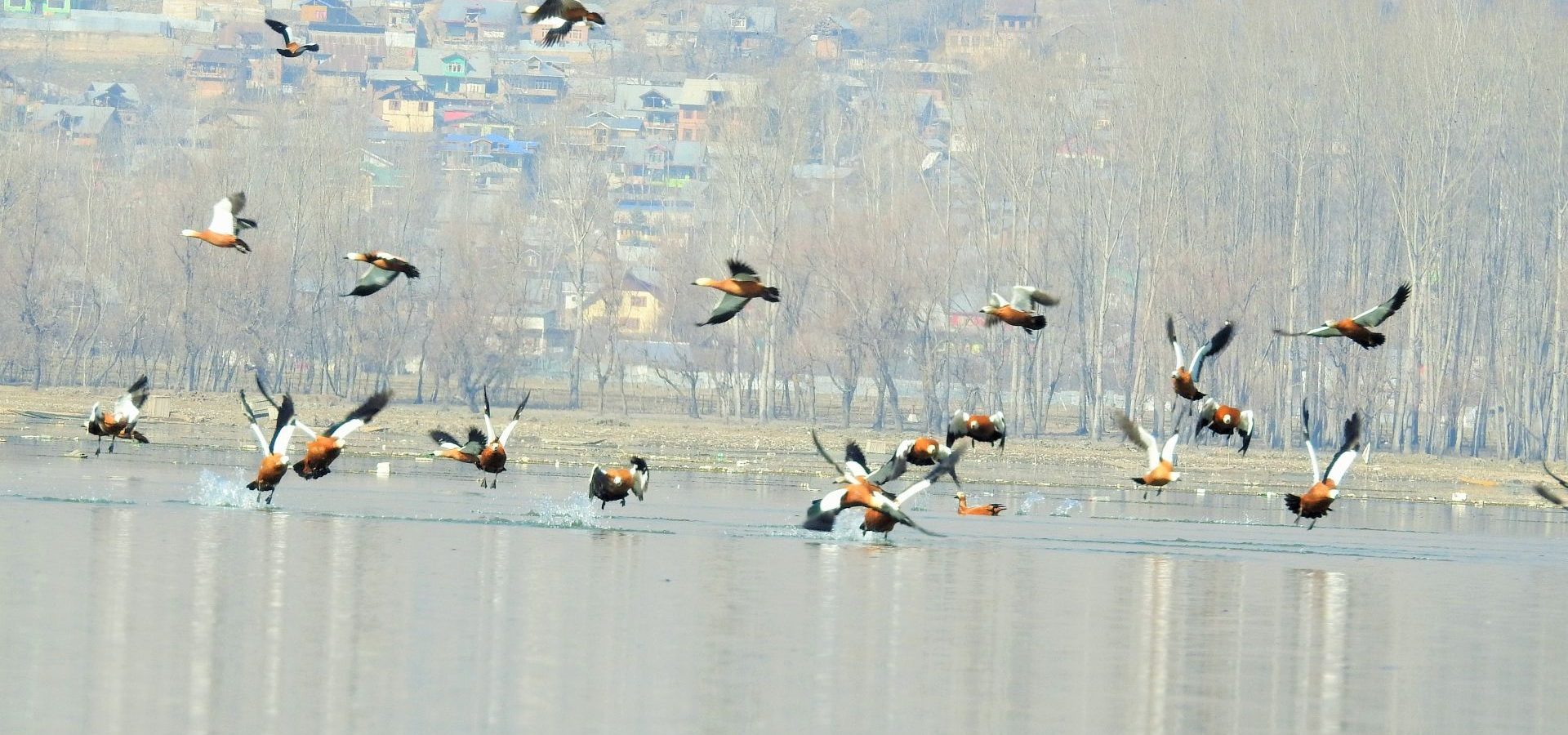The Asian Waterbird Census is an annual citizen-science event that takes place from January to March. This effort is an integral part of the global waterbird monitoring programme – the International Waterbird Census (IWC) – that supports the conservation and management of wetlands and waterbirds worldwide. The census was initiated in 1987 in the Indian subcontinent and its primary objective is to assess the status of the wetlands and water birds, apart from documenting migratory birds and their habitats.
Despite the importance of this event, there are very few authentic portals where one can find information about the Asian Waterbird Census. In this blog, we will be explaining about the census and elaborating on Wildlife SOS’ efforts in the same.
Why is the Asian Waterbird Census important?
The importance of wetlands cannot be understated – the term defines a wide umbrella of important feeding, roosting and foraging habitats for a multitude of species, including millions of migratory waterbirds. The Ramsar Convention lists all types of natural and man-made wetlands, including rivers, lakes, reservoirs, ponds, freshwater swamps, mangroves, mudflats, coral reefs, rice fields and sewage farms in its definition of the term, making it of utmost significance to protect and safeguard these important nesting, feeding and roosting habitats.

Waterbirds are the most important indicator of the health of wetlands, as the number and species of waterbirds indicate the quality of habitats. Many of these species are currently threatened by a wide array of human-induced threats including draining of wetlands, habitat fragmentation, contamination of food supplies and mortality from pollution-induced factors. The census is an annual count of the waterbird population. A cost-effective way to monitor regional population trends, the census is the key to determining the quality and identification of wetlands of high importance. The data gathered from this exercise is crucial towards developing conservation strategies and address bottleneck issues.
Who carries out the census?
In Asia every year, the census is primarily carried out by participants from all walks of life: university and school staff, students, nature club members, amateur and professional ornithologists and government and non-governmental agencies related to forestry, wildlife or wetland conservation.
The massive participation in this event makes it one of the largest citizen science programmes in the world. The Asian Waterbird Census runs in parallel with other regional programmes of the International Waterbird Census in Africa, Europe, West Asia, the Neotropics and the Caribbean. According to Wetlands international-South Asia, to date, more than 6,100 sites of 27 countries have been covered with the active participation of thousands of volunteers.

What are the objectives of the census?
Besides providing a basis for estimating waterbird populations, the census also helps in monitoring changes in waterbird numbers and the distribution of wetlands. It also aims to improve knowledge of little-known waterbird species and wetland sites while identifying and monitoring sites that are important for waterbirds in general and, more specifically, identifying and monitoring sites that qualify as Wetlands of International Importance under the Ramsar Convention on Wetlands. In India, the Ramsar Convention has listed 42 sites of International Importance. You can get the list here (external link). The information provided by the census also forms a base for international agreements.
In most recent news, the recent outbreak of bird flu has been a matter of concern to conservationists and ornithologists, and it is expected that the findings of this year’s census will shed light on the impact of the outbreak on the waterbirds of this region.

What role did Wildlife SOS play in AWC 2021?
Our team operating out of Jammu & Kashmir, led by our Program Coordinator Aaliya Mir, worked in the area of Wular lake, one of the largest freshwater lakes in Asia. It is situated in Bandipora district in Jammu and Kashmir. This area was divided into three points to facilitate easier spotting of birds and recording the data.
The census in Wular lake was conducted in a matter of a day and included the monitoring of various avian species in the area. Over twenty species of migratory waterbirds were observed by the WSOS team.

What is the methodology for recording birds and the next steps?
After the area was divided into three points, the team was divided accordingly and each group set off to observe species in the allocated area.
Each group took pictures of the allotted areas and proceeded to divide them into equal squares. Then the number of birds and species in each square was counted to gather an estimate.
The data gathered by these groups was recorded standardized forms. Along with this, the condition of the wetland habitat was also observed and notations made in a document to be submitted along with the bird population forms.
The teams were also given a checklist of the species that occur in the decided wetland habitat from which to cross-check those that had been spotted.
Depending on the number of birds of a certain species spotted in a preset area, an estimation of the species population will be gathered.
The final results compiled as an annual report by the organizers are then published on public domains where they can be accessed by anyone after a few months of the census. These results go on to help bring in new legislation for conservation purposes and are used as references for other publications, amongst many others.
Here is the published AWC list for 2019.

What were the challenges faced by our team?
The team had to exercise extreme patience in order to observe the birds. This involved sitting motionless in one place for a considerable period of time. We had to maintain a considerable distance between us and the birds we were trying to record. This involved the presence of sophisticated equipment like long-range lenses and handling of this equipment over rough and unpredictable terrain.
You can find out more about the work done by Wildlife SOS in Jammu & Kashmir here and here.





